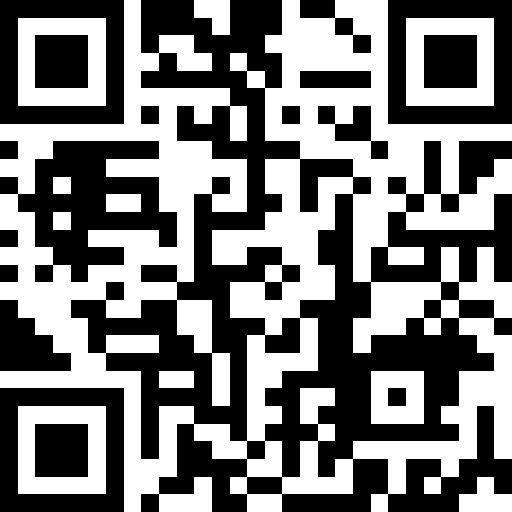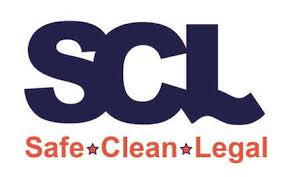Food Safety Audit for Hospitality Suppliers on behalf of The University of Cambridge - 2024
-
Site conducted
-
Conducted on
-
Prepared by
-
Location
1.0 SITE & KITCHEN REQUIREMENTS
1.0 INGREDIENTS and PACKAGING CONTROL
1.1 Ingredients and packaging control
1.1.1 Practices for accepting deliveries
-
Is it possible that deliveries are left at room temperature for longer than 30 minutes before they are put away?
-
Is there a dedicated area where deliveries are accepted and checked?
1.1.2. INGREDIENTS REQUIRING STORAGE IN THE FREEZER - STORAGE FACILITIES and STOCK ROTATION
-
Are freezers operating at the correct temperature? (< -18°C) (it is recommended that temperatures are checked 2 times per day)
-
After a visual inspection, can you confirm that all freezers are in good condition? (visual inspection including cleanliness and excessive buildup of ice)
-
Are foods properly wrapped and labelled? (including food frozen in house)
-
Is there any risk of cross-contamination? (physical/microbiological/chemical/allergenic)
1.1.3. INGREDIENTS REQUIRING REFRIGERATION - STORAGE FACILITIES and STOCK ROTATION
-
Is the chiller/fridge operating at the correct temperature? (<8°C) (it is recommended that temperatures are checked 2 times per day)
-
After a visual inspection, can you confirm that all fridges are clean and in good condition?
-
Are foods properly wrapped and labelled? (inspection include checks if any of the products have passed its Use By Date or Best Before Date?)
-
Is there any risk of cross-contamination? (physical/microbiological/chemical/allergenic)
1.1.4. PROCESS OF DEFROSTING INGREDIENTS AND READY TO EAT PRODUCTS
-
Are all foods defrosted safely in the fridge?
-
Are all products including raw meat defrosted in containers deep enough to contain any excess liquid?
-
Are products defrosted in the chiller labelled showing ''defrost on date'' and new ''use by date''
-
Are labels placed next to other labels, ensuring that the new label is not covering the original information?
1.1.5 STORAGE FACILITIES and STOCK ROTATION
-
Is the dry storage area clean and tidy?
-
Is there evidence of stock rotation?
-
Is food stored off the floor or on shelves or pallets?
-
Are all staff following manufacturer's instructions to store open products?
-
Are open ingredients labelled to show "opening on date" and "discard on date"?
-
Are ingredients containing any of the 14 allergens stored in a dedicated place or containers?
1.2 CENTRAL PRODUCTION UNIT processes
1.2.1. BUILDING STRUCTURE AND EQUIPMENTS MAINATENANCE
-
Is the building structure in good condition and easy to maintain? (inspection including visual checks on ceiling, walls, and floors etc.)
-
Is the preparation area spacious enough to separate food preparation processes from handling of the ready to eat food?
-
Are pieces of equipment maintained to a satisfactory standard? (visual inspection including checking the cleanliness and any identifying any damaged or missing parts)
-
Are work surfaces clean and easy to maintain?
1.2.2. INGREDIENTS PREPARATION PRACTICES
-
Is food operator following rules regarding colour coding of the equipment (RED - raw meat/ BLUE- fish/ YELLOW - RTE, etc.)? (Is each colour of color-coded cutting boards, knives and other utensils kept separately? )
-
Is there a dedicated area in the kitchen and dedicated equipment for raw meat? (for example, clearly labelled or color-coded equipment)
-
Are vacuum pack machines clearly labelled and placed in different zones to ensure that ready-to-eat food is not contaminated by raw meat?
-
Are dirty vegetables washed at the sink?
-
If so, is the sink (including taps and surrounding area) disinfected after?
-
Are salads washed in the same sink as contaminated foods? if they are, the sink must be disinfected before use.
1.2.3. COOKING PRACTICES
-
Are meats and high-risk foods cooked to a minimum of 75°C?
-
Is the core temperature of the cooked food monitored and recorded?
-
Is the temperature probe sanitized before and after each use?
-
Are staff following the procedures described in the implemented Food Safety Management System?
1.2.4. COOLING PRACTICES
-
Are foods cooled in a hygienic area?
-
Is a blast chiller available and used in the kitchen?
-
Is the cooling time and temperature monitored and recorded?
-
Are products labeled with production date and new use-by date? (recommended: production date + 2 days)
-
Is cooked and chilled food stored in the fridge to be used later?
-
Is cooked and chilled food packed using a vacuum pack machine?
-
Is the vacuum pack machine dedicated to RTE (ready-to-eat) foods?
1.0 Ingredients and Packaging control - MAJOR issues
-
- Food premises are not kept clean and in good repair and condition. The design and size of premises allow for accumulation of dirt and undesired mould on surfaces.
-
- Surfaces (including surfaces of equipment) in contact with food are not maintained in a good condition, are not easy to clean and, are difficult to disinfect if required.
-
- Business don’t have effective procedures to maintain premises in good condition, for example procedure is written down but is not followed by staff members.
-
- Hot water and cold potable water are unavailable.
-
- There are no hand wash sinks in the food preparation area.
-
- There are none or very limited records regarding food items that were cooked, and later served, chilled and stored or frozen.
-
- Products past ‘’use by date’’ found in the fridge.
-
1.0 Major - Other
1.0 Ingredients and Packaging Control - MINOR issues
-
- Staff members know the processes, but due to lack of supervision and control there are some areas or single pieces of equipment missed during the cleaning and / or maintenance.
-
- Hand wash sinks are available, but there is not enough antibacterial soap, blue roll or blue roll containers are covered in dust or dirt.
-
- A piece of equipment still has protective foil left on stainless steel surfaces, and the foil start peeling off preventing staff from effective cleaning.
-
- Packaging containers re-used for food in the kitchen are creating a potential risk of physical contamination, because of paper labels that haven’t been fully removed before cleaning.
-
1.0 Minor - Other
2.0. ARANGEMENTS FOR FOOD TRANSPORT & EVENT MANAGEMENT
2.1. ORDERS PACKAGING and TRANSPORT
2.1.1. ORDERS PREPARATION PROCESS
-
Is storage for food containers and other packaging in good condition?<br>Are crates or/and containers clean and in good condition?
-
Is packaging made from material that is safe in contact with food?
-
Is there a dedicated area in the fridge for packed orders that are waiting for dispatch?
2.1.2. VEHICLE/ VEHICLES
-
Do you own or have access to a refrigerated vehicle?
-
Is the vehicle clean, in good condition and no risk of contamination?
2.2. EVENT DAY DOCUMENTS & MONITORING
-
What type of food is prepared for an event:
-
Are you or your staff involved in serving the food on the day of the event?
-
If food is delivered to the client, are they handling it themselves?
-
Is there a standard document that is used for monitoring Food Safety on events? Please give examples if applicable.
-
Do you ask clients if anyone has dietary requirements, before taking the order?
-
Do you pass on the allergen information with each order?
2.0. ARRANGEMENTS FOR FOOD TRANSPORT & EVENT MANAGEMENT - Major Issues
-
& EVENT MANAGEMENT
-
- Vehicles and/ or food containers used for transporting food are also used to transport other objects.
-
- There are no records to prove that foodstuffs were at appropriate temperatures during transport.
-
2.0 Major - Other
2.0. ARRANGEMENTS FOR FOOD TRANSPORT & EVENT MANAGEMENT - Minor Issues
-
- Event day documents completed, but only some information is missing that can be explained by the chef / or responsible manager.
-
2.0 Minor - Other
3.0 FORMAL Food Safety and Health & Safety REQUIREMENTS
3.1. FOOD SAFETY MANAGEMENT SYSTEM
3.1.1. General
-
Recent EHO inspection date and result.
-
What type of Food Safety Management System is implemented?
-
Is each temperature probe calibrated at regular intervals?
-
Are probes and disposable sanitized wipes available and stored in a hygienic manner?
3.1.2 Allergen Control
-
Does business have a system to document and manage standard recipes? System that is also a source of allergen information for labels.
-
Are ingredients checked by the team on receipt?
3.1.3 CLEANING AND DISINFECTION PRACTICES
-
Are staff following the correct procedures as described in the cleaning schedule?
-
Is there a dedicated storage for cleaning chemicals separately from food?
-
Are the chemicals properly labelled?
-
Is there a dishwasher available?
-
Are disposable cloths used?
-
Are reusable cloths used?
-
Are separate cloths and cleaning equipment used in the toilet area?
3.1.4 Waste disposal
-
Do all internal bins in the kitchen have lids and are food operated?
-
Is the waste area clean and tidy?
3.1.5 Pest Control arrangements
-
Are the premises pest proofed and are premises free of any signs of infestation?
-
Are fly killers installed in the kitchen?
3.2 HEALTH AND SAFETY
3.2.1 Health and Safety Arrangements
-
Has employer fulfilled its duty of care to ensure that people are working in a safe working environment?
-
Has the employer ensured that the equipment is well maintained and in good condition?
3.2.2 FIRST AID ARRANGEMENTS
-
Is a first aid box available in a convenient location/locations?
-
Are staff aware of how to report accidents at work?
3.2.3 FIRE SAFETY ARRANGEMENTS
-
Are fire extinguishers and other fighting equipment in relevant locations around the building?
-
Are fire doors closed and easy to access, and corridors clear and not obstructed?
3.0. FORMAL Food Safety and Health & Safety REQUIREMENTS - MAJOR issues
-
- Food Safety Management System – is not adequate or is only on paper or in electronic version but procedures are not followed.
-
- Generic daily checks and temperature control documents are not used.
-
- There are no clear procedures to manage stock by using in house labelling systems. (There are no opening on labels, staff are not checking manufacturers’ instructions and/ or staff are not familiar with the labelling system.)
-
- There is no system to capture standard recipes, that can be than used for creating allergen matrixes and preparing documents that are shared with clients.
-
- Ingredients and /or products containing allergens are not segregated and are left in locations that can create a risk of cross-contamination of other ingredients or ready to eat products.
-
- No First Aid arrangements, for example there is no First Aid box available on site.
-
3.0 Major - Other
3.0. FORMAL Food Safety and Health & Safety REQUIREMENTS - MINOR issues
-
- There are some gaps in daily records.
-
- Labelling system is inconsistent and must be amended to ensure adequate stock rotation, stock control and any products that require to be stored after being prepared to have a clear production date, and if applicable frozen on dates.
-
- Cleaning schedule is very basic and important pieces of equipment are not included hence being missed during cleaning days.
-
- First Aid box available but needs to be replenished. (For example, there is not adequate number of plasters)
-
3.0 Minor - Other
4.0 EMPLOYEES TRAINING & PERSONAL HYGIENE
4.1 TRAINING (certificates and internal training)
4.1.1 EMPLOYEES TRAINING
-
Is there evidence that staff members were trained on internal Food Safety and H&S procedures?<br>Are staff trained commensurate to their work?
-
Have all staff members completed Food Safety lvl2 accredited training (or higher-level training)?<br>Level 2 training need to be completed within the last 24 months.
-
- Have managers completed Food Safety level 3 accredited training (or higher-level training)?
-
- Is the exclusion procedures for food handlers suffering illnesses understood?
-
- Are all staff trained on allergen control?
-
- Are staff trained on how to use Personal Protective Equipment safely?
4.2 PERSONAL HYGIENE
4.2.1 PERSONAL HYGIENE AND OTHER WELFARE ARRANGEMENTS
-
- Is the staff toilet well maintained with all sanitary provisions?
-
- Is there a dedicated hand wash sink/sinks in the food preparation area?
-
- Is there hot water in the taps?
-
- Is anti-bacterial soap available next to the hand wash basin?
-
- Is a blue roll or hand dryer next to the hand wash sink?
-
- Is there a changing room and storage for personal belongings outside of the preparation area?
-
- Is there an area where staff can rest and relax during work breaks?
4.2.2 PERSONEL FOLLOWING PERSONAL HYGIENE RULES
-
Are general uniform standards adhered to? (including: clean overalls and hair covers, disposable gloves and plastic aprons)
-
Are staff overalls clean?
-
Is hair covering worn?
-
Is the 'no-jewelry' policy implemented? (Do staff wear jewelry: rings, earrings, watches?)
-
Are disposable gloves available? & are they replaced when required?
-
Are cuts, sores, abrasions suitably covered?
-
Do staff wear appropriate footwear?
4.0. EMPLOYEES TRAINING & PERSONAL HYGIENE - MAJOR issues
-
- Staff members haven’t received Food Safety lvl2 training for more than 24 months.
-
- Manager or lead chef haven’t completed qualifications Food Safety lvl 3 or above.
-
- There are no records that staff members received induction and refresher trainings during their employment on topics like general food safety hygiene rules and general health and safety rules. (that applies to all staff that were employed for longer than 3 months)
-
4.0 Major - Other
4.0. EMPLOYEES TRAINING & PERSONAL HYGIENE - MINOR issues
-
- Staff member or members require to do additional training on one subject, for example labelling processes.
-
- Every food-handler is wearing protective clothing (uniform) but are not wearing hair cover or have excessive amount of jewellery.
-
4.0 Minor - Other







